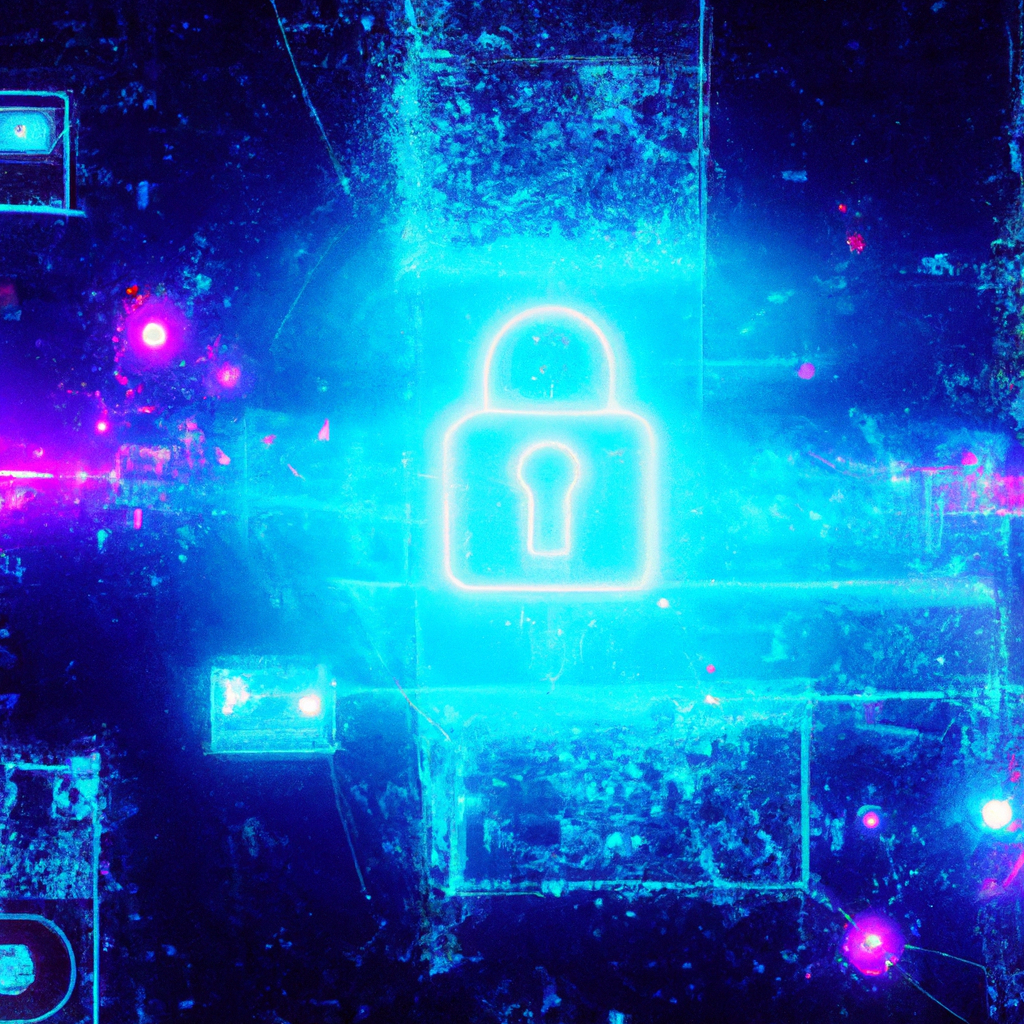We’re diving into the world of secure IoT solutions with GCP IoT Core. In an era where the Internet of Things (IoT) is becoming increasingly prevalent, ensuring the security of connected devices and the data they transmit is paramount. GCP IoT Core offers a comprehensive platform for building secure IoT solutions, providing robust security features like device authentication, secure communication, and automatic device configuration management. With GCP IoT Core, developers can take advantage of Google Cloud’s powerful infrastructure and extensive security measures to confidently deploy IoT applications. Whether it’s monitoring smart homes, managing industrial equipment, or tracking fleet vehicles, GCP IoT Core takes the complexity out of securing your IoT solutions.

Overview of IoT Security
IoT, or Internet of Things, has become an integral part of our daily lives. From smart home devices to industrial sensors, IoT has revolutionized the way we live and work. However, with the increasing number of connected devices, security becomes a critical concern. In this article, we will explore the importance of IoT security, the challenges in securing IoT solutions, and how Google Cloud Platform (GCP) IoT Core can help address these issues.
Understanding the Importance of IoT Security
As more and more devices are being connected to the internet, the potential attack surface for hackers also increases. IoT devices often collect and transmit sensitive data, making them attractive targets for cybercriminals. Without proper security measures, these devices can be vulnerable to unauthorized access, data breaches, and even physical harm. Therefore, it is crucial to prioritize IoT security to protect both the devices and the data they handle.

Challenges in Securing IoT Solutions
Securing IoT solutions presents several unique challenges. First, IoT devices often have limited computing power and memory, making it challenging to implement robust security protocols. Additionally, the diversity of IoT devices and vendors leads to inconsistent security standards and practices. Moreover, IoT solutions involve complex networks and data flows, which can be difficult to monitor and secure effectively. Addressing these challenges requires a comprehensive approach and an understanding of the specific requirements of IoT security.
Introduction to GCP IoT Core
GCP IoT Core is a managed service provided by Google Cloud Platform that simplifies the deployment, management, and security of IoT devices. It offers a secure and scalable infrastructure to connect, manage, and ingest data from IoT devices. With GCP IoT Core, you can focus on building your IoT applications while leveraging the built-in security features and robust infrastructure provided by Google.

Architecture of GCP IoT Core
Components of GCP IoT Core
GCP IoT Core consists of several key components that work together to enable secure and efficient IoT solutions. At the core of the architecture is the IoT Gateway, which acts as a bridge between the IoT devices and the cloud. It facilitates secure communication, data ingestion, and device management. Other essential components include the IoT Device Manager, which provides device registration and management capabilities, and the Pub/Sub messaging system for scalable communication between devices and applications.
Device Management and Authentication
Device management and authentication are fundamental aspects of IoT security. GCP IoT Core offers a comprehensive device management system that allows you to register, authenticate, and securely manage your IoT devices at scale. With device authentication, GCP IoT Core ensures that only authorized devices can connect to the cloud. This prevents unauthorized access and protects the integrity and confidentiality of the data transmitted by the devices.
Security Features in GCP IoT Core
GCP IoT Core provides several security features to enhance the overall security of your IoT solutions. It supports industry-standard protocols such as Transport Layer Security (TLS) and enables end-to-end encryption to secure the communication between devices and the cloud. Additionally, GCP IoT Core integrates with Google Cloud IAM (Identity and Access Management) to provide fine-grained access control, allowing you to specify who can access and manage your IoT resources.
Securing Data Communication
Data Encryption in GCP IoT Core
Data encryption is a critical aspect of securing IoT solutions. GCP IoT Core ensures that data transmitted between devices and the cloud is encrypted using strong encryption algorithms. This safeguards the confidentiality and integrity of the data, preventing unauthorized access and tampering. By encrypting data at rest and in transit, GCP IoT Core provides a robust defense against potential security threats.
Secure Device-to-Cloud Communication
Device-to-cloud communication is a vital part of IoT solutions, and securing this communication is crucial to prevent unauthorized access and data breaches. GCP IoT Core uses industry-standard protocols such as MQTT (Message Queuing Telemetry Transport) and HTTP to establish secure connections between devices and the cloud. This ensures that the data transmitted between devices and the cloud is private and protected from interception and tampering.
Importance of Using TLS/SSL
Transport Layer Security (TLS) and Secure Sockets Layer (SSL) are cryptographic protocols that provide secure communication over a network. GCP IoT Core leverages TLS/SSL to establish secure connections between devices and the cloud. By using TLS/SSL, GCP IoT Core ensures the confidentiality and integrity of the data transmitted, protecting it from eavesdropping and manipulation.

Identity and Access Management
Role-Based Access Control in GCP IoT Core
The principle of least privilege is crucial in IoT security. GCP IoT Core implements Role-Based Access Control (RBAC) to provide granular access control, allowing you to define roles and permissions for different users and devices. This ensures that each user or device has only the necessary privileges to perform their specific tasks, reducing the risk of unauthorized access and potential security breaches.
Fine-Grained Access Control
Fine-grained access control allows you to define and enforce specific access policies for your IoT resources. In GCP IoT Core, you can set up access control rules based on device attributes, such as device type or location, and restrict access to sensitive operations or data. This granularity provides an additional layer of security, allowing you to tailor access permissions to specific devices or user roles.
Best Practices for IAM in IoT Solutions
To ensure the highest level of security in your IoT solutions, it is essential to follow best practices for Identity and Access Management (IAM). This includes regularly reviewing and updating access permissions, implementing multi-factor authentication for critical operations, and monitoring access logs for any suspicious activities. By following these best practices, you can maintain the integrity and security of your IoT infrastructure.
Monitoring and Logging
Overview of Monitoring IoT Devices
Monitoring IoT devices is crucial for maintaining the security and performance of your IoT solutions. GCP IoT Core offers comprehensive monitoring capabilities to help you keep track of the health and status of your devices. You can monitor device connectivity, data ingestion rates, and other relevant metrics to identify and address any issues that may affect the security or efficiency of your IoT infrastructure.
Utilizing Stackdriver for Device Monitoring
GCP IoT Core integrates with Google Cloud’s Stackdriver Monitoring service to provide real-time monitoring and alerting capabilities. With Stackdriver, you can set up custom dashboards to visualize device metrics and receive alerts when predefined thresholds are exceeded. This allows you to proactively monitor and address any potential security or performance issues, ensuring the smooth operation of your IoT solutions.
Logging and Audit Trail in IoT Solutions
Maintaining an audit trail of activities in your IoT solutions is critical for security and compliance purposes. GCP IoT Core provides logging capabilities that allow you to capture and analyze logs generated by your devices and applications. By recording device events and user activities, you can quickly identify any security breaches or unauthorized access attempts, enabling timely response and mitigation.

Secure Device Provisioning
Securely Onboarding IoT Devices with GCP
Device provisioning is the process of securely onboarding IoT devices to your infrastructure. GCP IoT Core offers a secure device provisioning mechanism that ensures only authorized devices can connect to your IoT solution. It utilizes device-specific credentials, such as X.509 certificates or device keys, to authenticate and securely establish connections between devices and the cloud. This eliminates the risk of unauthorized devices gaining access to your network.
Using Certificates for Device Authentication
Digital certificates play a crucial role in device authentication and secure communication. GCP IoT Core supports the use of X.509 certificates for device authentication, ensuring that only trusted devices can connect to your IoT infrastructure. By leveraging certificates, you can establish a strong trust model and prevent unauthorized devices from infiltrating your network.
Automated Device Provisioning in GCP IoT Core
GCP IoT Core provides automated device provisioning capabilities to simplify the process of onboarding large numbers of IoT devices. With automated provisioning, devices can securely enroll themselves into your IoT solution without the need for manual intervention. This not only streamlines the deployment process but also ensures that devices are properly authenticated and authorized before gaining access to your network.
Firmware Updates and Patch Management
Importance of Regular Firmware Updates
Regular firmware updates are essential for maintaining the security and functionality of IoT devices. GCP IoT Core allows you to remotely manage and update the firmware of your devices in a secure and scalable manner. By regularly updating the firmware, you can patch security vulnerabilities, introduce new features, and improve the performance of your IoT devices, ensuring they remain secure and up to date.
Ensuring Secure OTA Updates
Over-the-air (OTA) updates enable you to remotely update the firmware of IoT devices without physical access. GCP IoT Core provides secure OTA update mechanisms, ensuring that the firmware updates are delivered securely and verified for authenticity. By utilizing secure OTA updates, you can minimize the risk of unauthorized access or tampering during the firmware update process.
Managing Patch Management for IoT Devices
Effective patch management is crucial for IoT security. GCP IoT Core offers tools and mechanisms for managing patch management across your fleet of IoT devices. By centrally managing patches and updates, you can ensure that all devices receive the latest security patches in a timely manner, reducing the risk of exploitation and improving the overall security posture of your IoT solutions.
Security Best Practices
Implementing Secure Coding Practices
Implementing secure coding practices is essential for developing secure IoT solutions. GCP IoT Core provides guidelines and best practices for secure coding, including input validation, secure storage of sensitive data, and protection against common vulnerabilities. By following these practices, you can minimize the risk of introducing security flaws into your code and ensure the integrity of your IoT applications.
Using Network Segmentation for IoT Solutions
Network segmentation is a strategy that involves dividing a network into smaller, isolated segments. This helps minimize the potential impact of a security breach by containing it within a specific segment. GCP IoT Core supports network segmentation, allowing you to separate your IoT devices into different virtual networks based on their security requirements. By implementing network segmentation, you can enhance the security and resilience of your IoT infrastructure.
Regular Vulnerability Assessments
Regular vulnerability assessments are crucial for identifying and mitigating security risks in IoT solutions. GCP IoT Core provides tools and services that enable vulnerability scanning and assessment of your IoT devices and applications. By regularly scanning for vulnerabilities, you can proactively address any security weaknesses, apply necessary patches and updates, and ensure the overall security of your IoT infrastructure.
Integrated Security Solutions
Integrating Security Services with GCP IoT Core
GCP offers a range of integrated security services that can be leveraged with GCP IoT Core to enhance the security of your IoT solutions. These services include Cloud Identity-Aware Proxy (IAP), Cloud Armor, and Cloud Security Command Center. By integrating these services, you can add additional layers of security, protect against DDoS attacks, and gain visibility into potential security threats in real-time.
Advanced Threat Detection and Prevention
Detecting and preventing advanced threats is a critical aspect of IoT security. GCP IoT Core integrates with Google Cloud’s advanced threat detection and prevention services, such as Cloud DLP (Data Loss Prevention) and Cloud Security Scanner. By utilizing these services, you can detect and prevent data breaches, identify potential vulnerabilities, and proactively safeguard your IoT solutions against emerging threats.
Using Machine Learning for Anomaly Detection
Machine learning techniques can be employed to detect anomalies and identify potential security threats in IoT solutions. GCP IoT Core integrates with Google Cloud’s machine learning services, such as Cloud Machine Learning Engine, to enable anomaly detection and predictive analytics. By leveraging machine learning, you can detect abnormal device behavior, identify potential security breaches, and take proactive measures to mitigate risks.
Case Studies
Real-World Examples of Secure IoT Solutions Built with GCP IoT Core
To understand the practical application of GCP IoT Core in building secure IoT solutions, let’s explore a few real-world examples. In the healthcare industry, GCP IoT Core has been used to securely connect and manage medical devices, ensuring patient data remains confidential and secure. In the manufacturing sector, GCP IoT Core has enabled secure monitoring and control of industrial processes, minimizing the risk of physical harm and ensuring the integrity of production data.
Lessons Learned and Key Takeaways from Case Studies
From the case studies mentioned above, it is evident that GCP IoT Core provides a robust and secure platform for building IoT solutions. It emphasizes the importance of implementing strong security measures, such as device authentication, data encryption, and secure device management. Additionally, these case studies highlight the value of leveraging integrated security services and employing best practices for IoT security, such as regular vulnerability assessments and secure coding practices.
In conclusion, securing IoT solutions is crucial to protect against potential vulnerabilities and threats. GCP IoT Core offers a comprehensive set of features for building secure and scalable IoT solutions. By leveraging the capabilities provided by GCP IoT Core, such as secure device provisioning, data encryption, and integrated security services, you can ensure the confidentiality, integrity, and availability of your IoT infrastructure.
